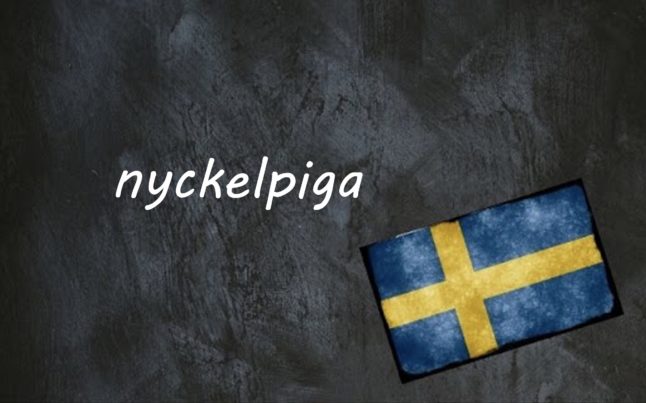Snäll means ‘nice’ or ‘kind’, and you can use it to describe someone’s behaviour in general or at a specific moment. For example: din man är riktigt snäll (your husband is a really kind person), or det var jättesnällt av dig att hjälpa till (it was really nice of you to help out).
Snäll can also have a slightly different context. Speaking to small children, you might say something like ‘var en snäll flicka/pojke och hjälp din pappa‘ (be a good girl/boy and help your dad).
And language learners should try to identify how to use snäll and snälla to mean ‘please’, and when not to use them.
At the start of the sentence, snälla has a pleading or emphatic tone. You’ll often hear it used by children to their parents, for example snälla mamma, kan jag få en hund? (please mum, can I have a dog?). And you would use it in contexts where there is an emphasis on ‘please’, rather than it just being added as a marker of politeness, for example if the stakes are high (snälla, låt mig vara – please, leave me alone!).
To understand the difference, it can help to compare some sentences. Snälla, jag kan inte prata just nu (please, I can’t talk right now) is emphatic, perhaps expressing frustration, compared to saying jag kan inte prata just nu, tack, which comes across as neutral. And if you said snälla, jag vill ha en kaffe (please, I want a coffee) it comes across as an extremely dramatic request begging for the drink, compared to the neutral jag vill ha en kaffe, tack (I’d like a coffee, please), which is what you’d say in a cafe.
Then there are phrases such as kan du vara snäll och sluta? (literally ‘can you be kind and stop?’) or ‘sluta är du snäll‘ (literally ‘stop [if] you are nice’). These aren’t really questions, but are polite ways of asking someone to do something: the equivalent of adding ‘would you?’ to a question in English (as in ‘do this, would you?’). In other words, the speaker is assuming that you are kind enough to do what they’re asking. Note: say var snäll och if you’re addressing one person only, and var snälla och if addressing more than one.
Most of the time, these are ways to soften a request and be politer than just issuing a demand. But watch out for the tone: adding är du snäll in an icy tone is a great way to be passive aggressive in Swedish.
You’ll also hear tack, snälla, which simply adds emphasis to tack (thank you), equivalent to ‘thanks very much’.
The word snäll comes from the Old Norse term snjallr (meaning ‘nice’, ‘skillful’ or ‘eloquent’) and you’ll find variants in the other Nordic languages, with slightly different nuances: Norwegian snill means ‘kind’ or ‘helpful’, Danish snild means something like ‘clever’, while Icelandic snjall is stronger and means ‘brilliant’.
One other context you may come across snäll in Swedish is in reference to trains.
The word snälltåg was used to refer to express trains until 1980, when the word resandetåg was created as the official term, but there’s still one long distance train operator called Snälltåget. These trains are probably perfectly nice, but that’s not what snäll means in this context. It’s actually a semi-translation of the German term Schnellzug (literally ‘fast train’), where schnell means ‘fast’ or ‘quick’.
But the two do actually share a lexical root, dating back even further than Old Norse. In very early Germanic languages, the term snellaz existed meaning ‘active/quick/bold’. Over the years, its meaning changed to refer solely to speed in some languages (like German and Dutch, and it used to have this meaning in Swedish too) and to focus on skill or character in others (like the Nordic languages, including slightly older Swedish). In today’s Swedish, the meaning has evolved so that there’s no connotation of skill, but simply of kindness, generosity or goodness.
Examples
Det var snällt av dig att dela med dig av ditt godis
It was nice of you to share your sweets
Snälla, säg någonting
Please, say something



 Please whitelist us to continue reading.
Please whitelist us to continue reading.
Member comments